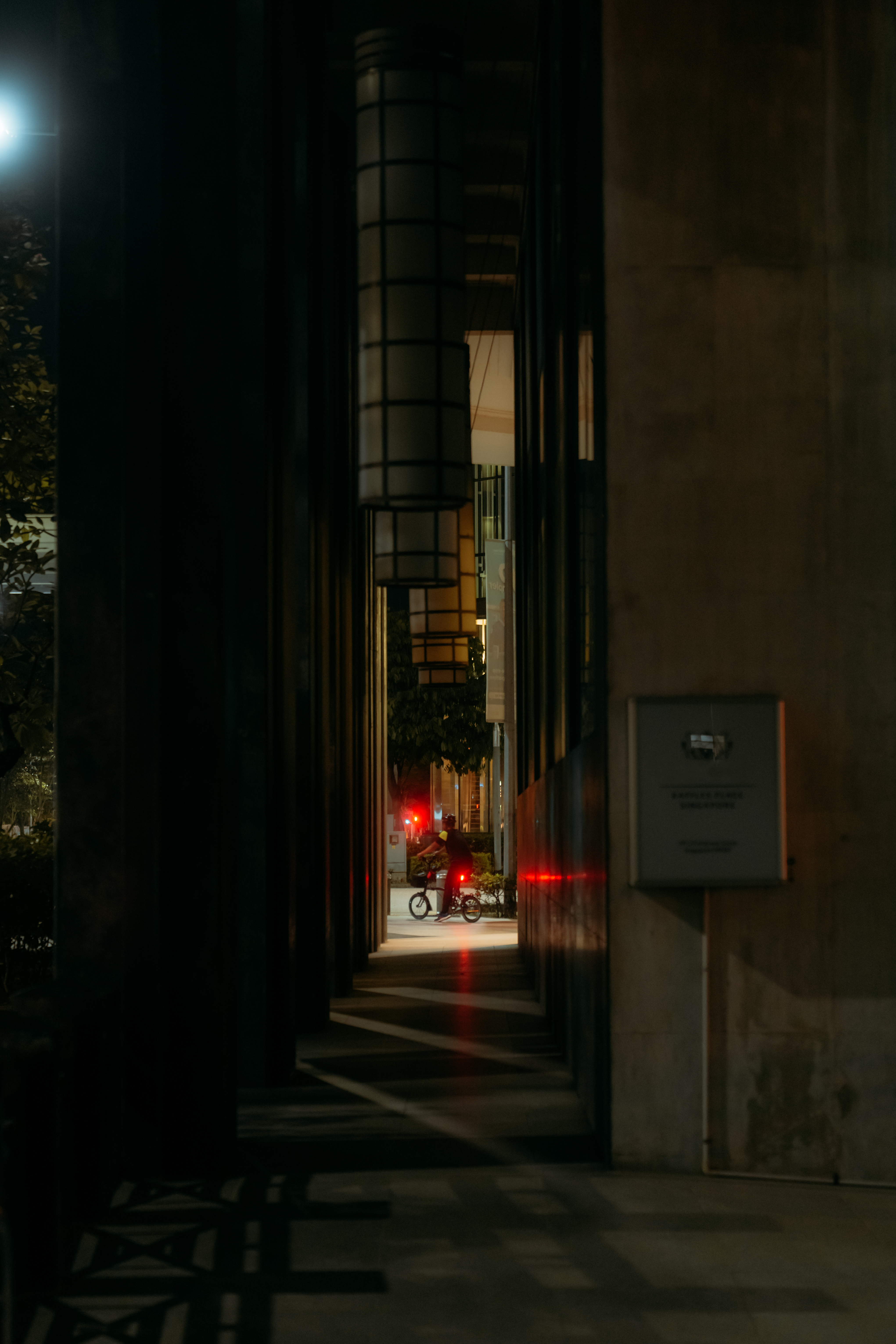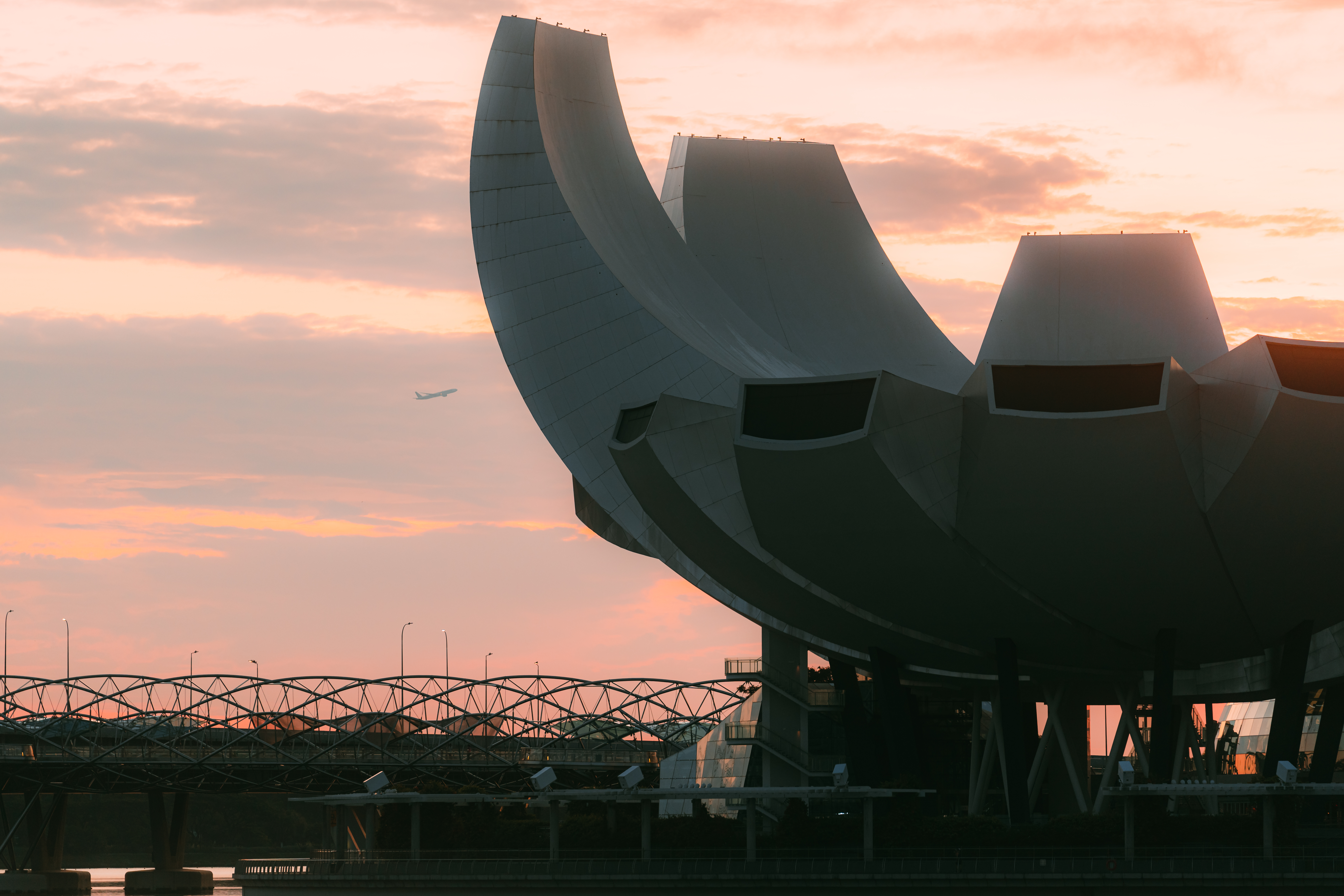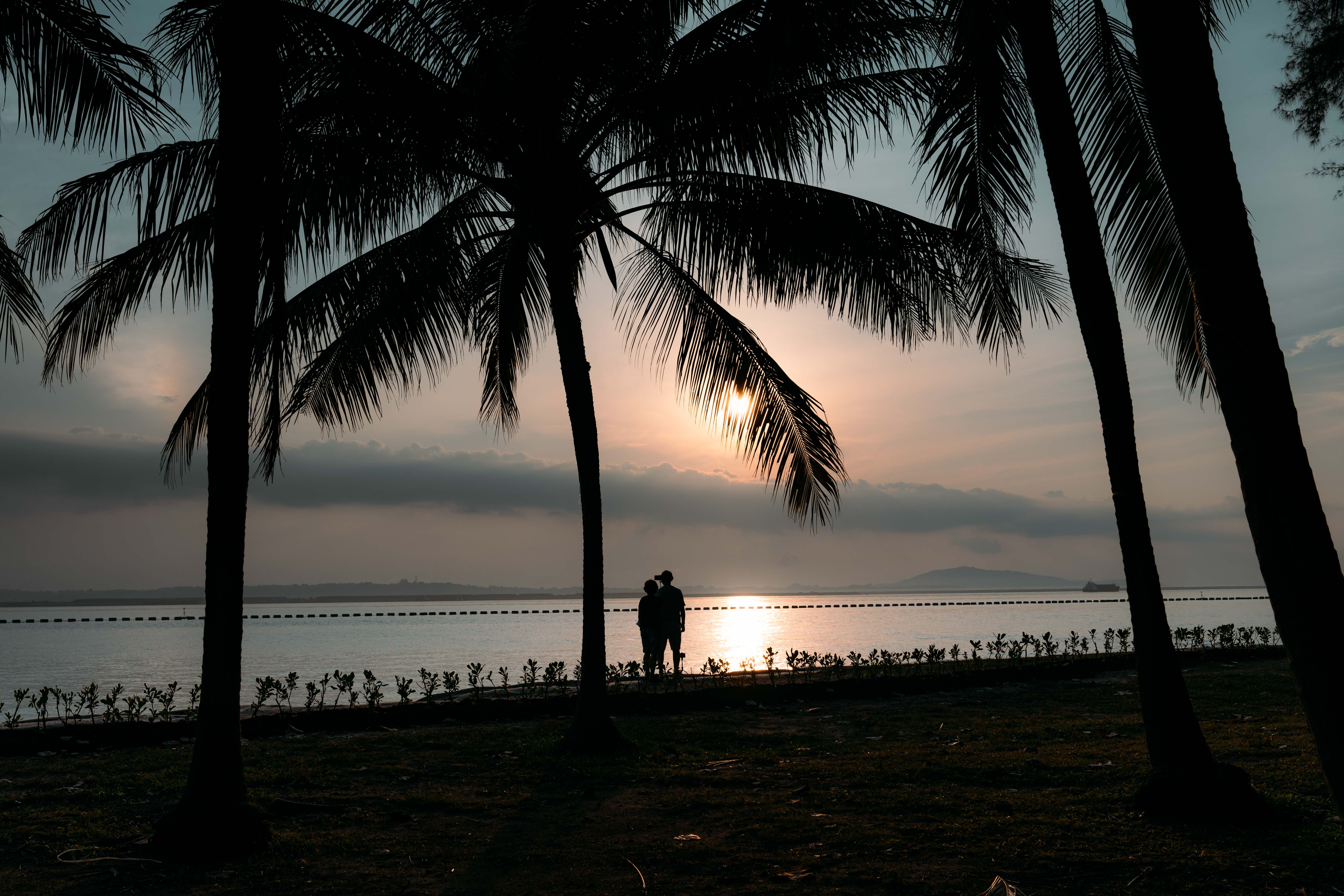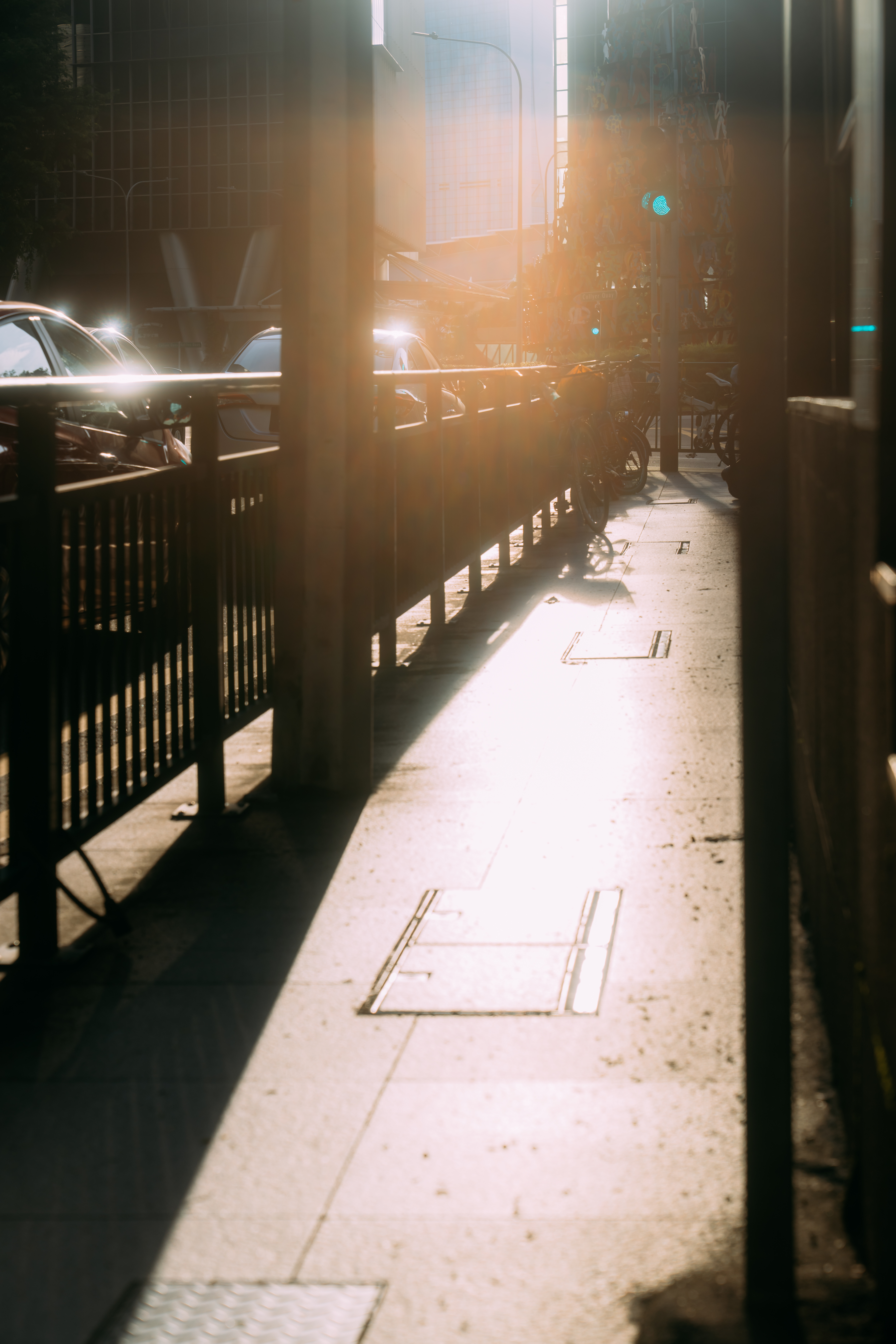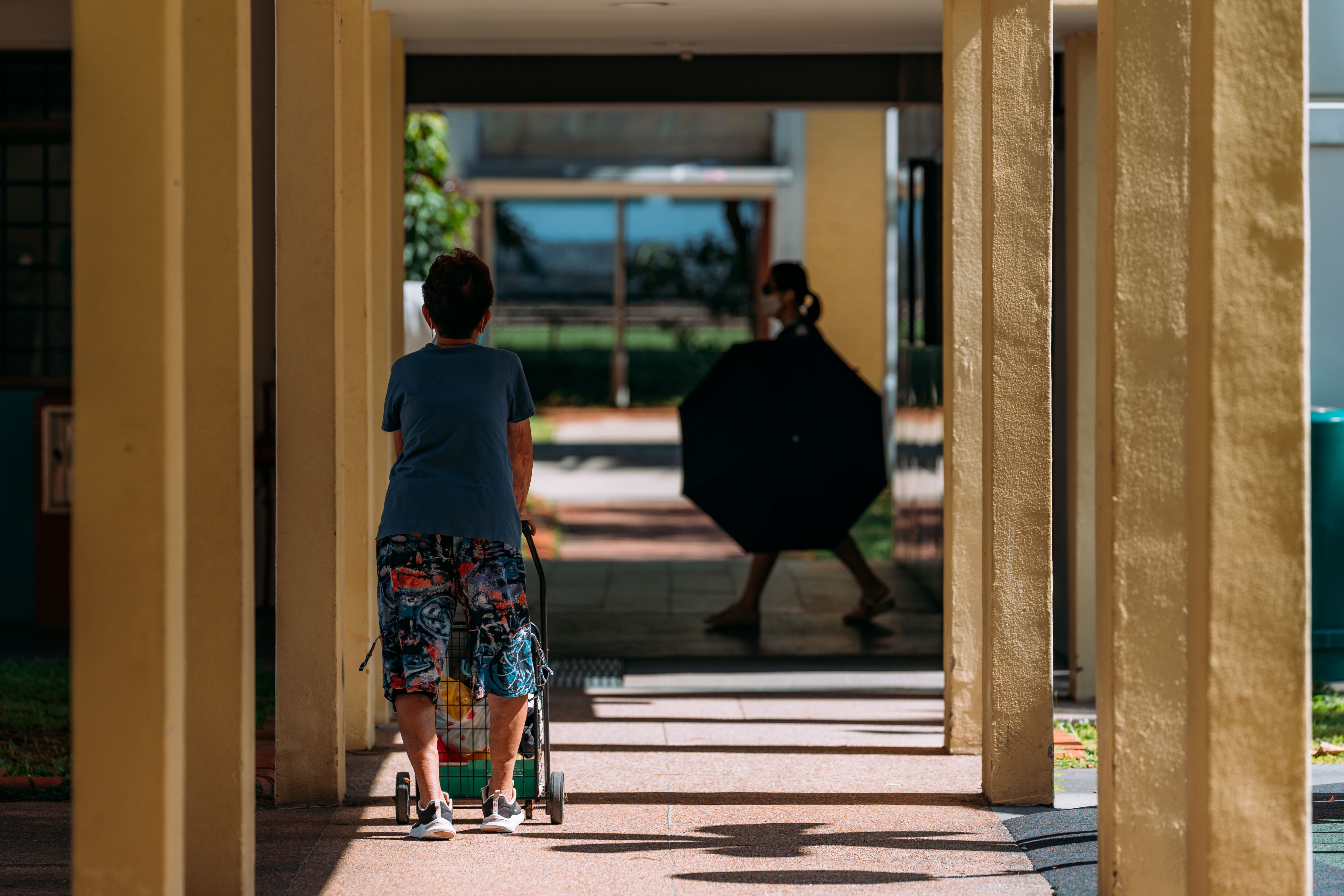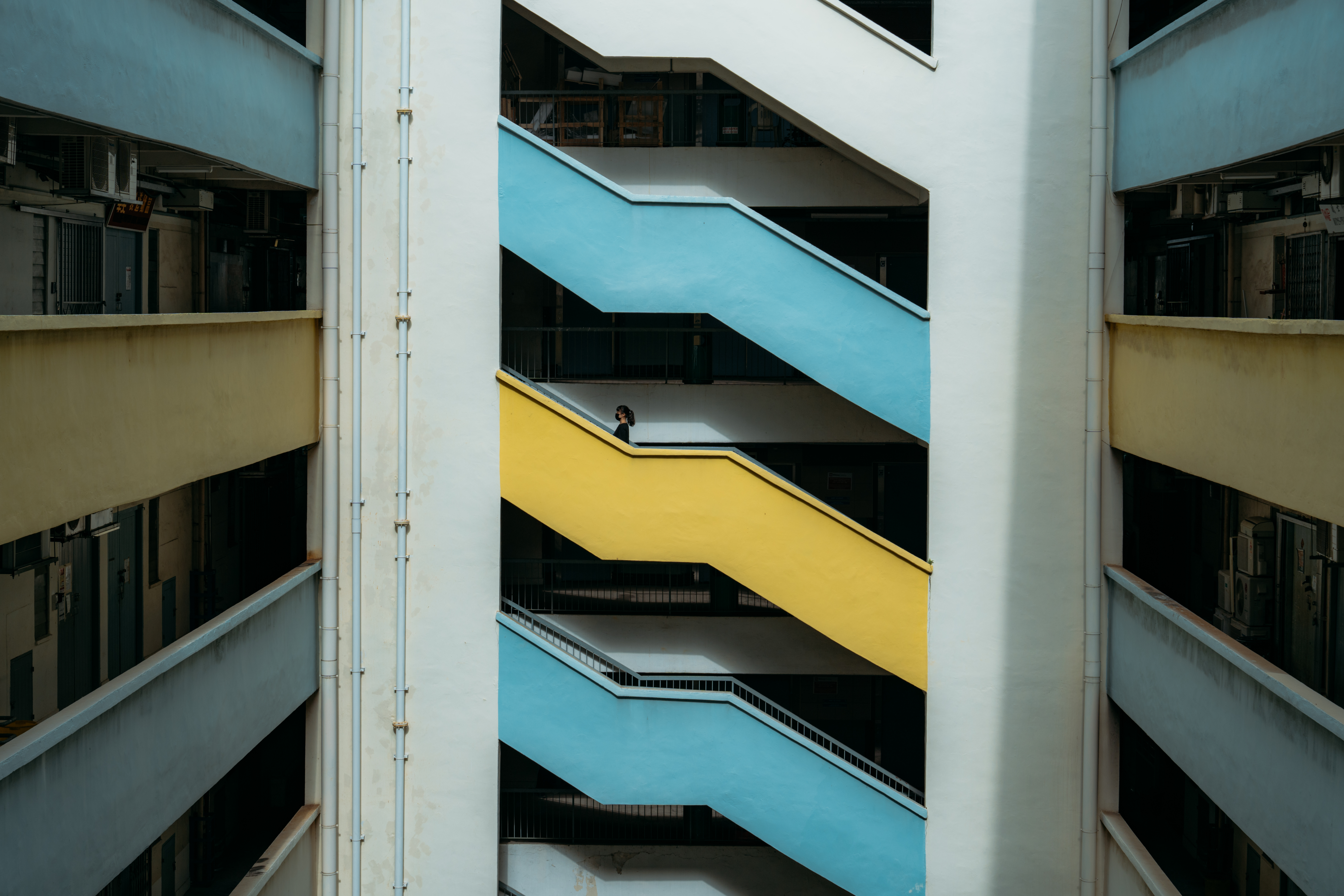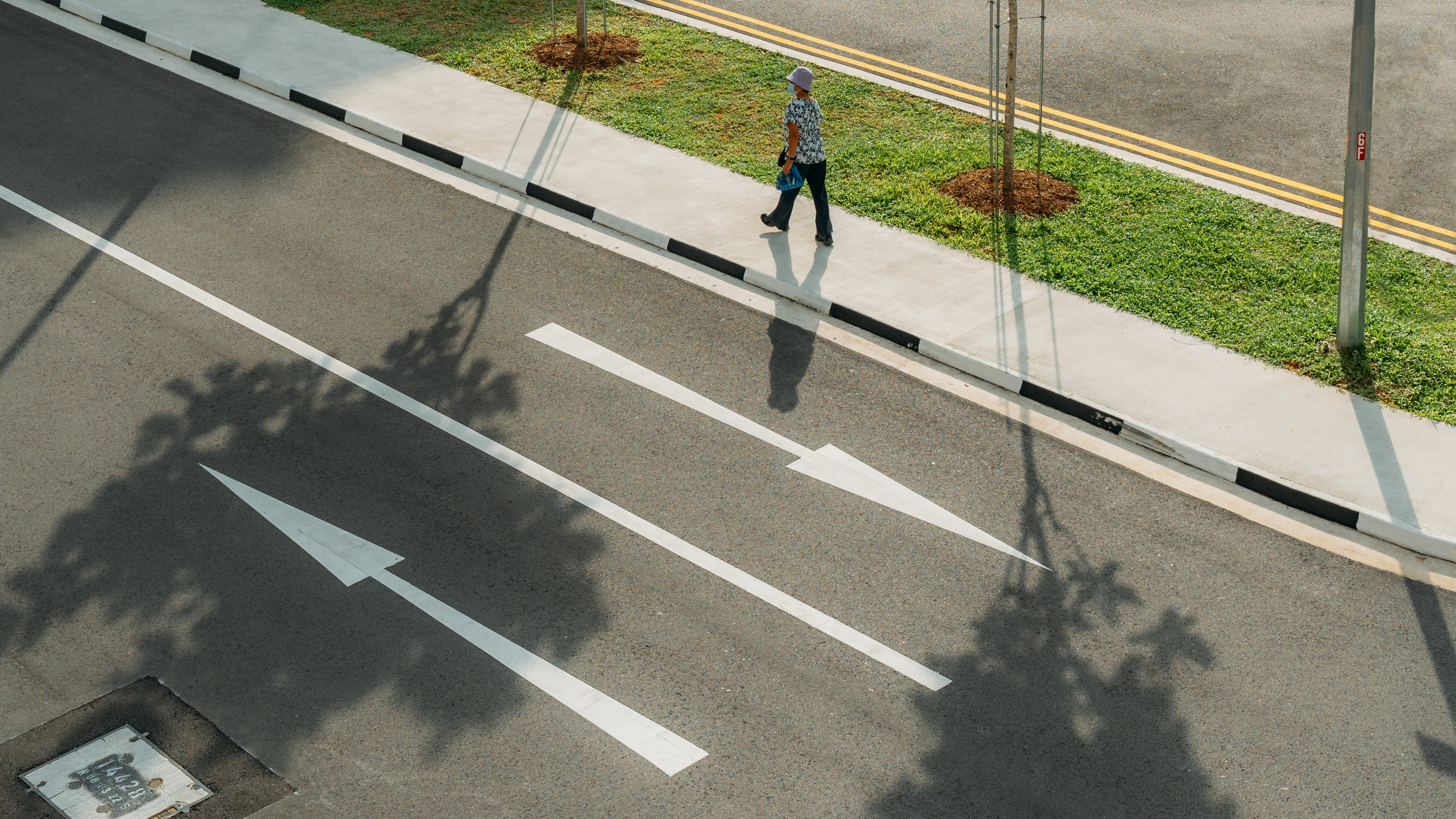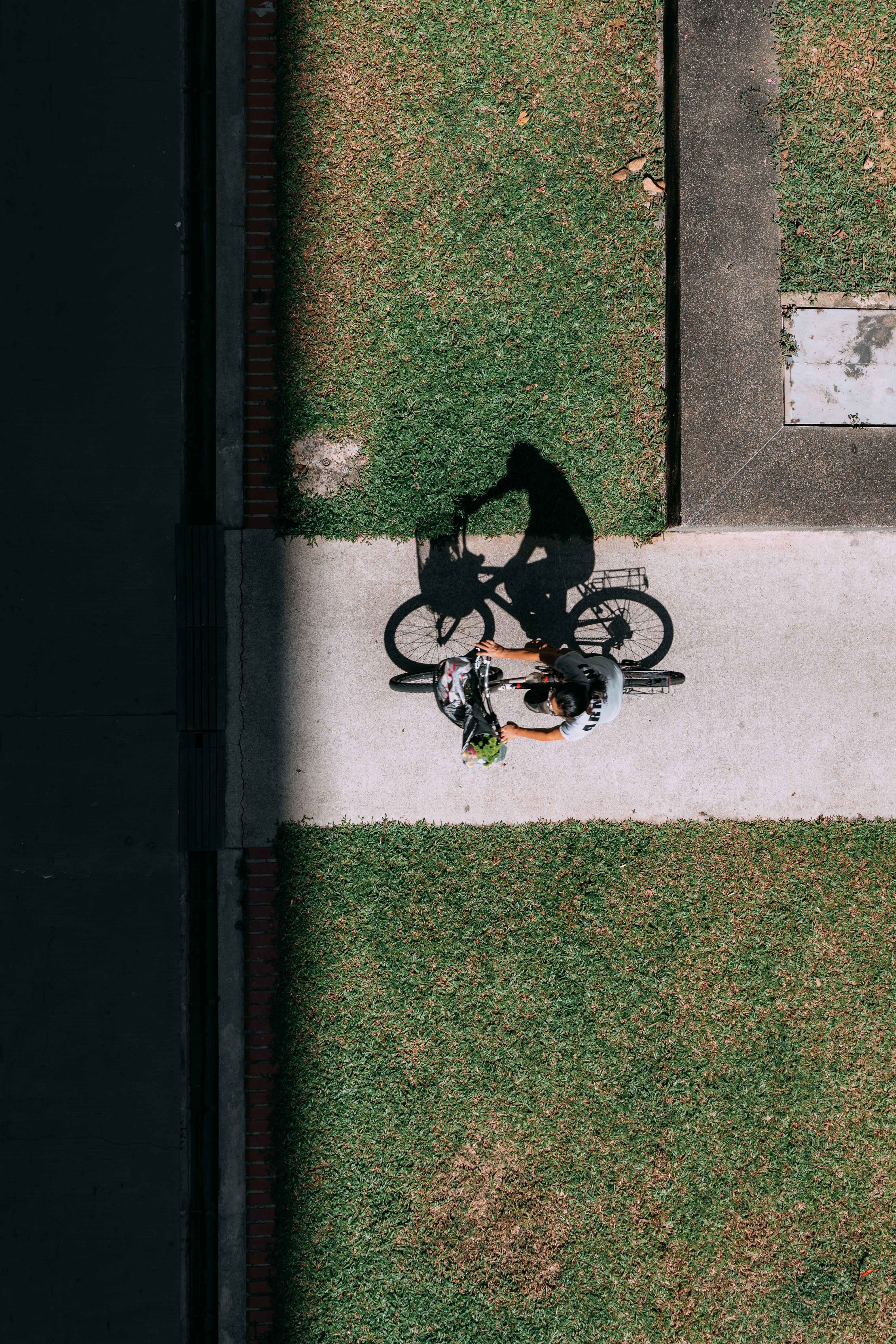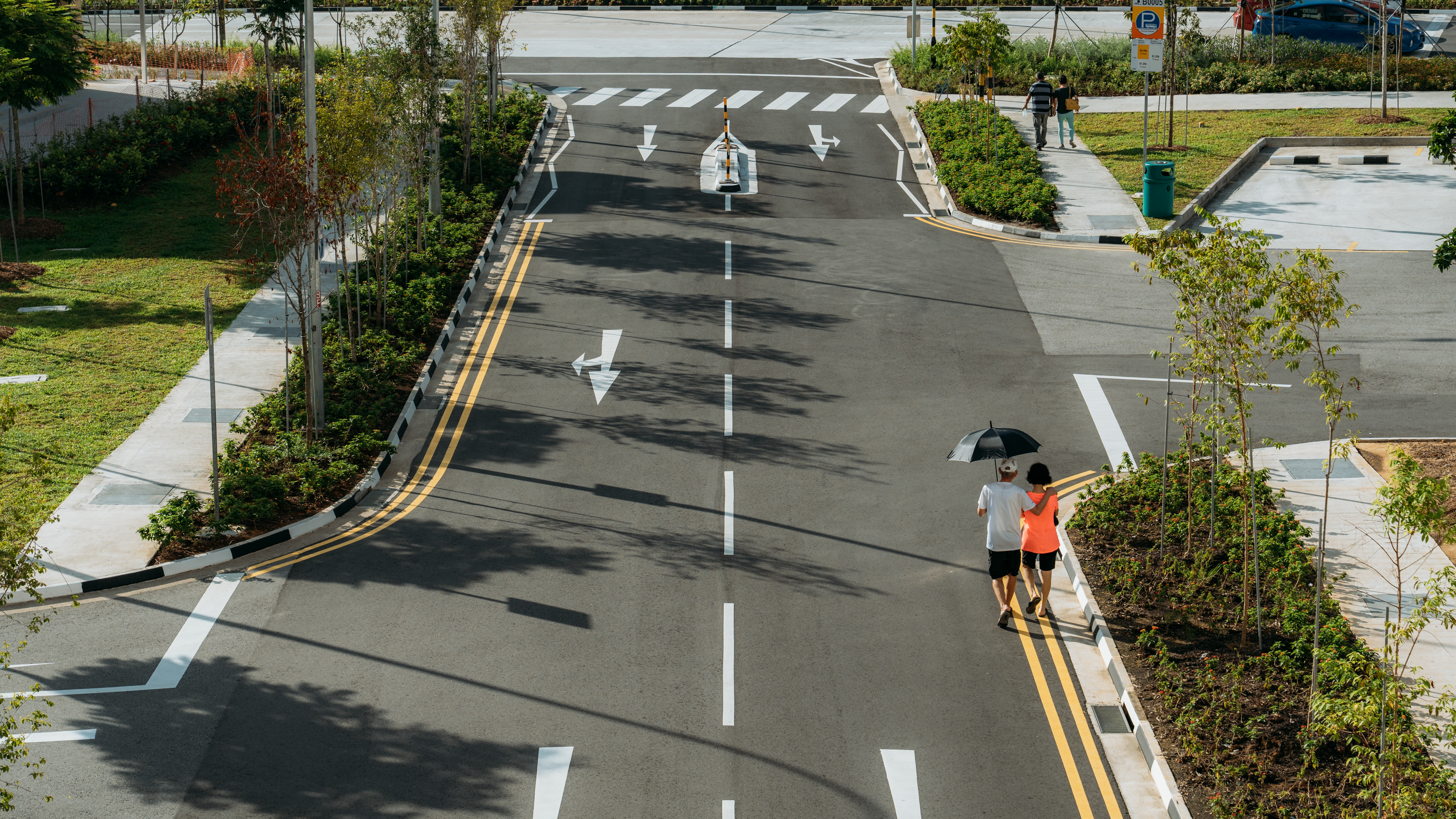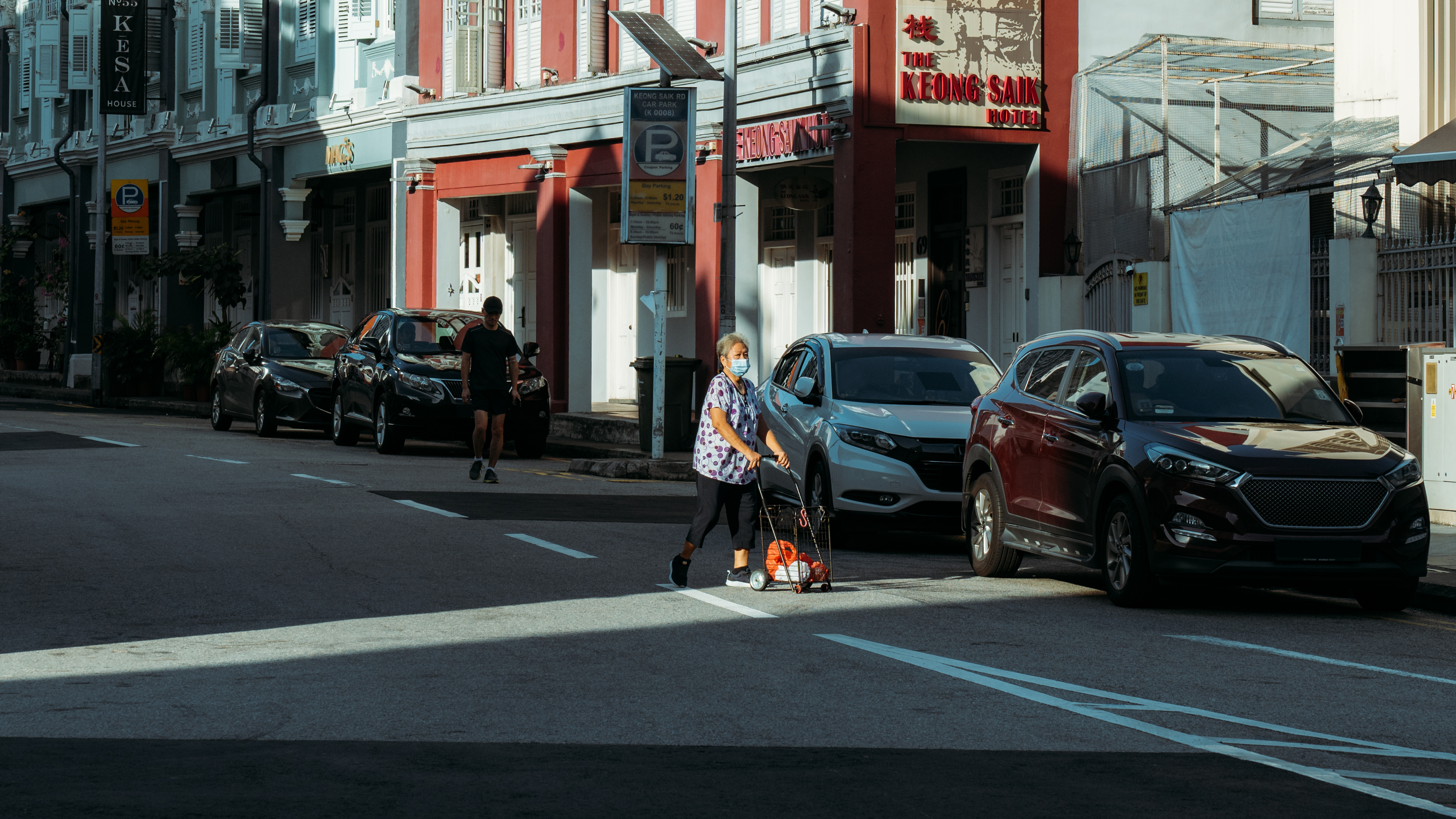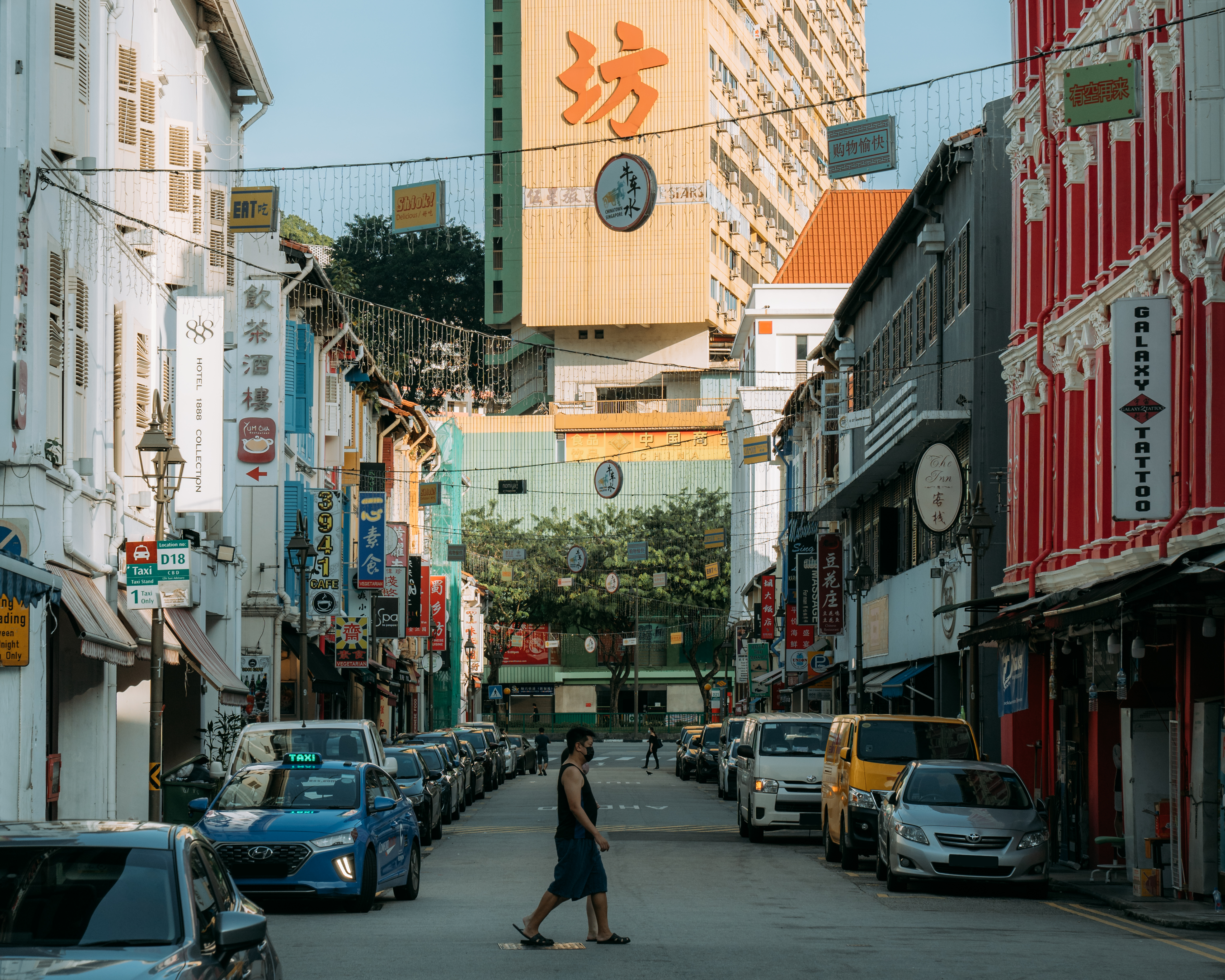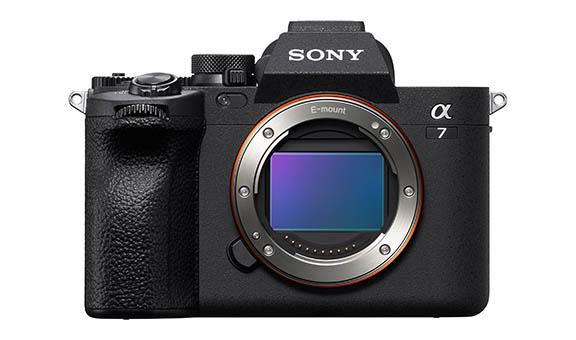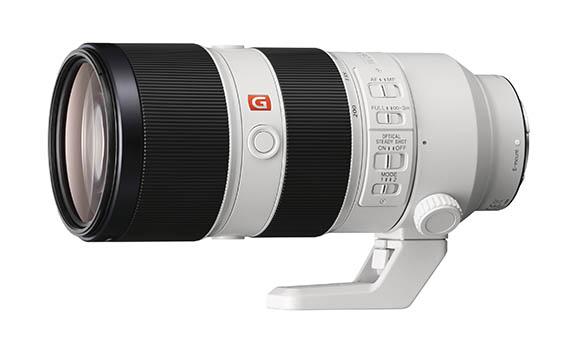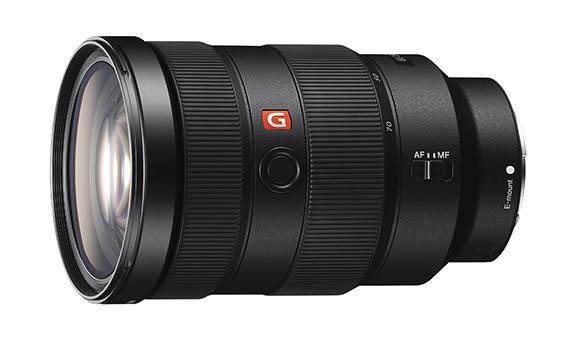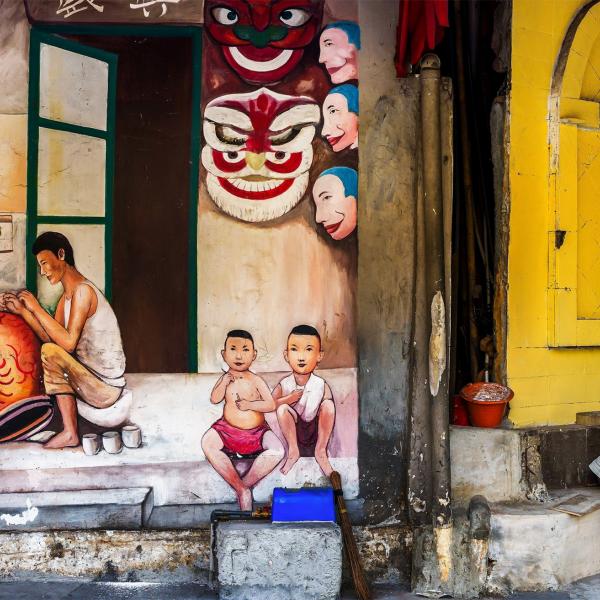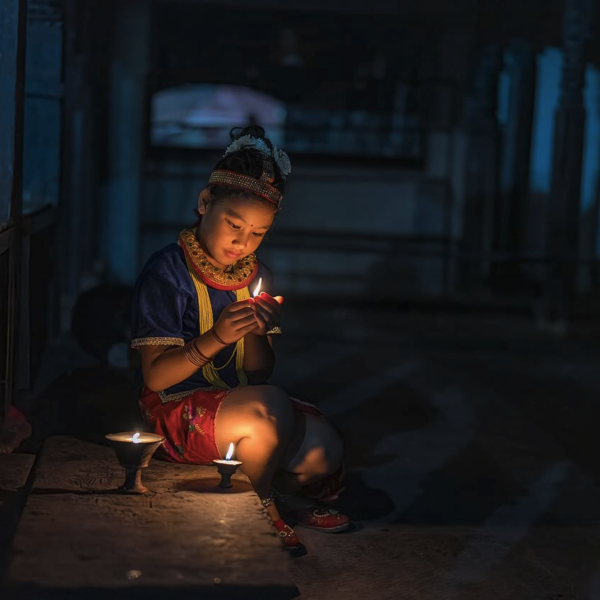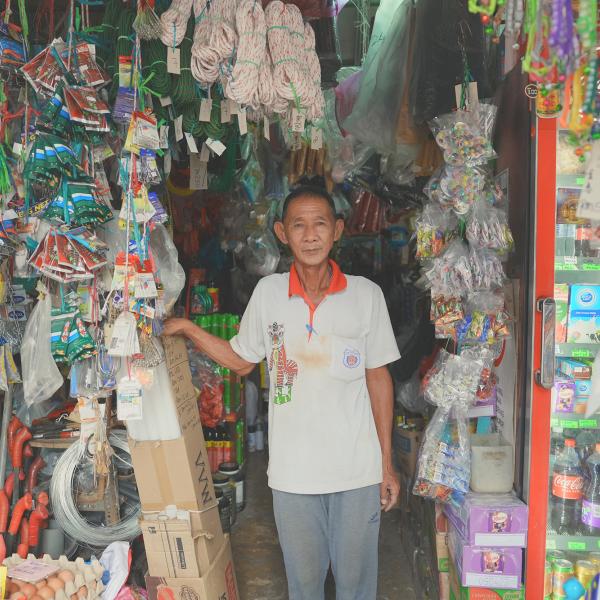Light and Shade in Street Photography
Jeryl Tan sheds light on his gear and how you can make the best of elements when out and about.
With over 70,000 followers, Jeryl Tan demonstrates his flair for snapping pictures of everyday life in the sprawling cityscapes of his native Singapore and around the world. His street photography weaves in the elements of his surroundings, creatively using lines, patterns, colours and most of all, light. To illuminate on how the streets ignite his inspiration, Jeryl linked up with Sony for a shoot themed ‘10 Hours, 10 Photos’. With his Sony gear in tow, Jeryl’s mission to capture the charm and spontaneity of Singapore’s streets began at 6AM.
What sparked your passion for photography?
I started photography because I have always loved capturing moments and freezing time. This ‘10 Hours, 10 Photos’ project really put into perspective that, whether the emotions conveyed are happiness or sadness, each photo is a specific moment in time never to be repeated. That is why I find photos to be such a powerful tool for communicating memories. I love how photos can be kept and looked at forever.
Another thing I love about photos is the complexity you can find if you look closely. A picture really is worth a thousand words. They are also great conversation starters and catalysts to form or strengthen bonds among people. Photography allows me to observe my surroundings a lot more, noticing things which may have gone over the heads of many. Besides that, it has also blessed me with the chance to explore new areas, meet different people and communicate my ideas. Executing these ideas is a process of never-ending growth, for example, allowing me to think differently about things like composition and so on.
The unpredictability of street photography came out in a big way for this shoot. As I began my quest in search for good lighting and moments at 6AM, I chanced upon situations that I would have never seen in all my years living in Singapore.
What attracts you to photographing the streets and public places?
Walking along unexplored streets always springs all kinds of surprises! Especially when you spend 10 hours roaming, you encounter a lot and you also see how light hits different parts of the street at different times of the day. The amazing thing about finding good natural light while out and about is that it is almost impossible to replicate the same mood and lighting conditions through artificial means.
For this particular shoot, to help capture good lighting, I used the Alpha 7 IV and the FE 24-70 mm F2.8 GM (SEL2470GM) and the FE 70-200 mm F2.8 GM OSS (SEL70200GM). Other times, I also like what many call the 'holy trinity' of lenses i.e. the FE 16-35mm F2.8 GM (SEL1635GM), the FE 24-70 mm F2.8 GM (SEL2470GM) and the FE 70-200 mm F2.8 GM OSS (SEL70200GM), because of the constant aperture throughout all their focal lengths. These lenses are also great for shooting in low-light conditions.
What light challenges surprised you when you began street photography?
Coming across interesting scenes at the 'wrong' timing of the day, is one that comes to mind. This can be a location with beautiful murals, but maybe it is too late in the day and streetlights are too dim. This really highlights the importance of being adaptable, but of course having found a spot with potential for great photos, you can always come back when the conditions are more favourable, which is something that I had to do while shooting for this project. It is in these kinds of situations where you learn to think about how to capture these moments beautifully, while 'working' with the elements as they are at that moment.
For this project with Sony, you spent 10 hours in the streets of Singapore and were tasked with snapping 10 photos in that time. Randomness and unpredictability is a common challenge in street photography, can you tell us what this experience was like? Was that time enough for you to get the pictures you wanted?
While I had intended to explore locations outside my usual stomping grounds, the randomness and unpredictability of this project — specifically in terms of lighting and challenging myself to create angles I had never done before — pushed me towards locations like my neighbourhood, the Central Business District and Chinatown's Keong Saik. With a list of locations in mind, it was interesting to be roaming the streets in the wee hours till the break of dawn, and as noon approached, realising that lighting conditions were becoming too harsh for my liking.
I had sufficient time to get the photos I wanted. In fact, I ended up shooting so many photos that it was tough choosing just 10 images for this project. There was a lot of experimenting with angles and trying to keep my style of photography. It was certainly a challenge, but I am happy to say that all the images I have taken are angles and compositions that I have never shot before throughout my entire photography journey.
What stories do you think these series of photos convey?
I think that every individual photo in this project has a story of its own to tell, simply by how the light or light source highlights a particular subject. Light can create focus, shape the perspective and even create another dimension with shadows — which may otherwise seem flat. As an entire series, I think you will see how the featured light changes from man-made light to natural sunlight.
10 hours is a fair amount of time and conditions can vary throughout the day, talk to us about what this experience was like in terms of gear? Did things go according to plan? Walk us through your setup on the day.
Things definitely did not go according to plan, because things happen so quickly when you are out shooting in the street. If you blink, the moment is gone. I would say that 95 percent of the time, I shoot based on whatever lens I have with the Alpha 7 IV, as the moment would have passed if I even thought of changing my lens. For the entire shoot, I ended up relying heavily on the Sony FE 24-70mm F2.8 GM and the FE 70-200mm F2.8 GM, though I had the FE 50mm F1.2 GM in my bag ready to be used. I did not use a tripod either, as I was constantly roaming the streets and doing long exposure on any photo would take up too much time. What I did to overcome this was to push the ISO capabilities of the Alpha 7 IV between the range of 1600 to 6400.
That said, where are your preferred shooting locations in Singapore?
I love Chinatown, the Central Business District, Telok Ayer and Keong Saik. However, for this project, I scoured Bedok, Chinatown, Keong Saik, Paya Lebar and Changi Beach to capture the spontaneity of the streets. These are locations that I frequent on my weekly strolls.
I thought to myself, if there is good light that hits the location as I imagined, it should create the shadows that I am looking for. I just have to wait for the right moment to capture, like if a cyclist will ride in the direction I was hoping she would.
What do you do when you see a perfect photo opportunity, but lighting conditions beyond your control are sure to cause "noise"?
Lighting conditions that will cause "noise" with Sony cameras really mean that the location is much too dark and not conducive to good snaps. I do not go above ISO 6400 to be quite honest, as any higher and the "noise" becomes obvious and colours are almost never retained well. That said, I have found that Sony prime lens with low aperture or lower f-stops do a great job at allowing more light to hit the camera sensor and reduce the “noise” without having to bump the ISO up too much. Another alternative would be to wait for the subject to walk under or past a light source.
Your street photography frequently uses streetlights, vehicle lights and silhouettes. How do you spot when to use these elements and how do they help capture the emotions you are trying to convey?
Street photography revolves a lot around the location itself, and this project was no different in that aspect. I still had to be aware of how to 'bring out' the subject, which is ultimately crucial to taking great photos. Elements like streetlights, sunlight, backlighting/silhouettes and shadows cast, help this by widening the breadth of feelings and emotions that can be communicated, which I believe really shines through in this ‘10 Hours, 10 Photos’ project. Whenever I press the camera shutter, I briefly envision how the photo will look after editing, especially in regard to colours in the overall composition.
What lighting factors influence your use of lines, patterns and colours?
It really depends on the time of day, how the light hits the surrounding structures and what lines and patterns come about as a result of that. Colours are often very much dependent on the location's lighting at the time of shoot. I cannot stress this enough, but I will always try to avoid shooting when the lighting is too harsh, which overexposes light coloured surfaces and white surfaces. Should an individual be wearing a light coloured top, harsh light will tend to blow the colour and will result in it looking overly bright. This prevents other details of the photo from being captured well.
Harsh light mainly occurs between 11am to 2pm, which is the hottest time of the day—shadows cast on the ground are the shortest and the light is top-down which is very unflattering for people.
Lines and patterns from backlighting and architecture stand out in your street photography. Tell us about your camera settings.
There are no specific camera settings, as different scenarios call for different settings and focus. For street photography I will keep my f-stop between F1.4 to F5.6 unless I intend to have more focus on the environment. I also use the 'holy trinity' of prime lenses, known to be the FE 24mm F2.8 G (SEL24F28G), the FE 40mm F2.5 G (SEL40F25G), and the FE 50mm F2.5 G (SEL50F25G), most of the time.
Since street photography is captured in a split second, it may be difficult to change the settings every now and then. So, I only shoot in manual mode (M). Then, looking at the lighting condition, I will set the ISO, aperture and shutter speed accordingly.
Considering that subjects can move relatively quickly, I have to ensure the shutter speed is fast enough to freeze the movement and capture it sharply. After determining the shutter speed, the aperture will then depend on each situation, whether to have full depth focus or shallow focus with more bokeh. Then finally, my ISO hardly goes above ISO 400 during daytime, unless the shutter speed is really fast (1/2000s) or the aperture is at F16/F22, which is unnecessary when capturing the streets. With the settings done, I will only need to ensure the focus is on the subject and press the shutter at the right moment.
Street photography happens in a split second. With this, were there moments you were planning to snap or any particular elements you were looking for? Did you achieve these in the shoot?
I don’t plan for any specific moments as street photography does not allow that. All the moments captured are moments that happen when I am present at the location. I search particularly for light and shadow that creates focus and certain shapes in contrast to its surroundings. I search for street moments that complement the lighting. I achieve this by walking around and exploring the area.
Was there anything you learned about lighting much later than you wish you did?
In street photography, artificial lighting, like streetlights, light posts, or even lights of establishments, create a whole new range and depth to photos that took me by surprise when I finally discovered it. Regarding street photography, I learnt that backlighting can really enliven images and make them that much more interesting, and this was a prominent part of my process for this project.
As the perfect street scene is totally unpredictable, superb image quality, exceptional ergonomics, speed, an expansive lineup of lenses and long battery life are crucial in capturing the life of the streets. These are features that photographers need to drive the creative process and capture the essence of unmediated encounters in public spaces. Ultimately, while dependable equipment is necessary, street photography should also be powered by patience, skill, hard work, and a sprinkle of luck to execute masterful storytelling.

